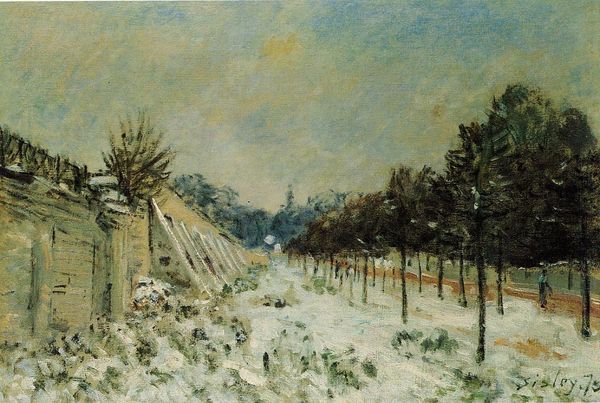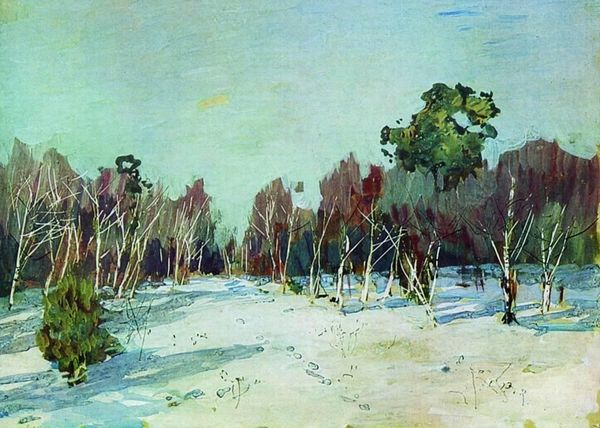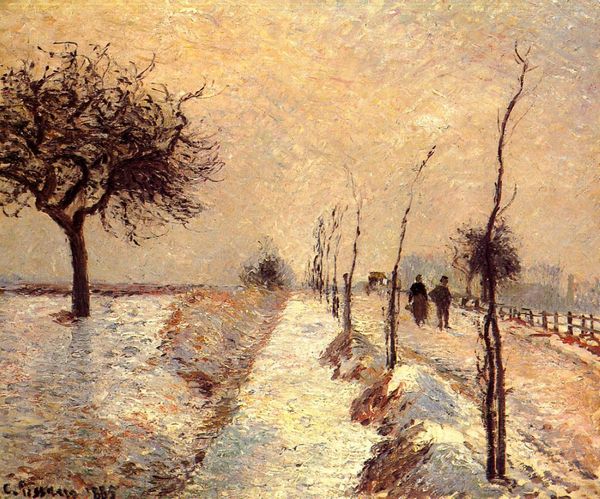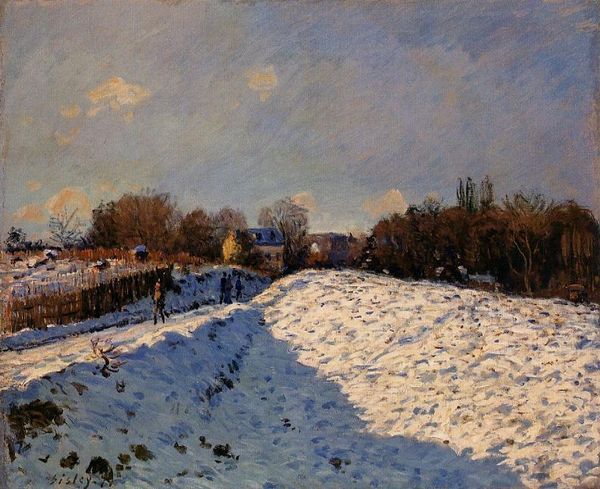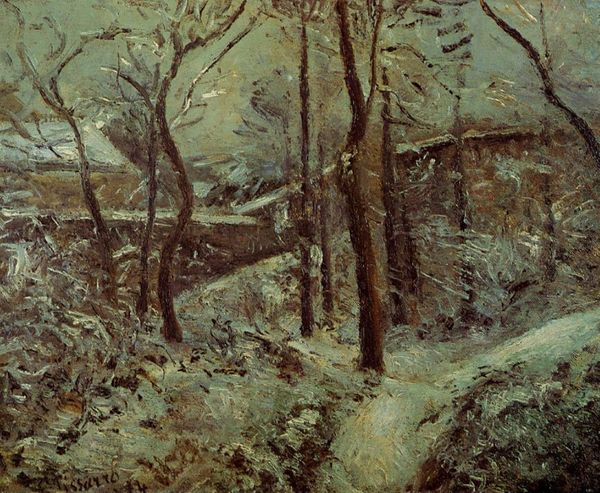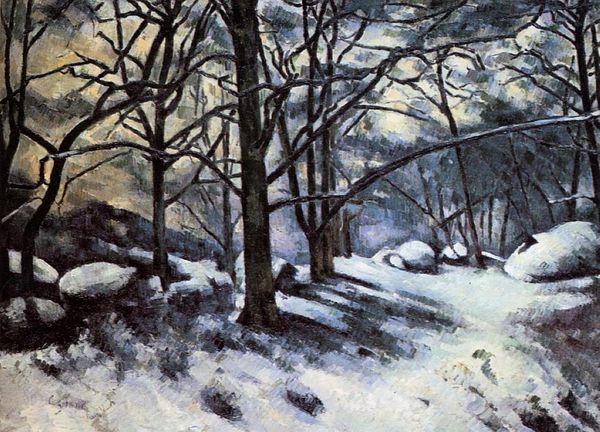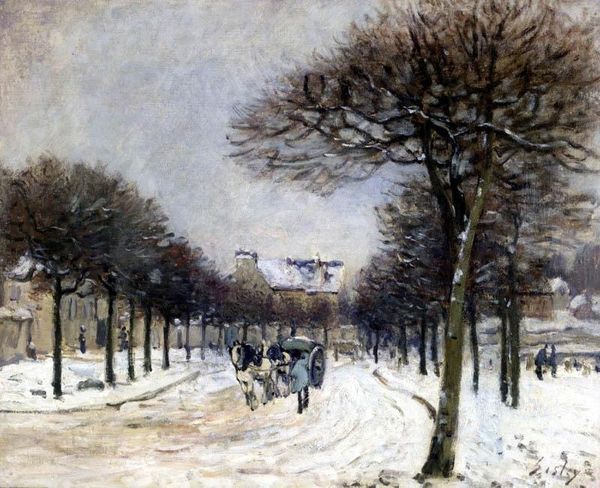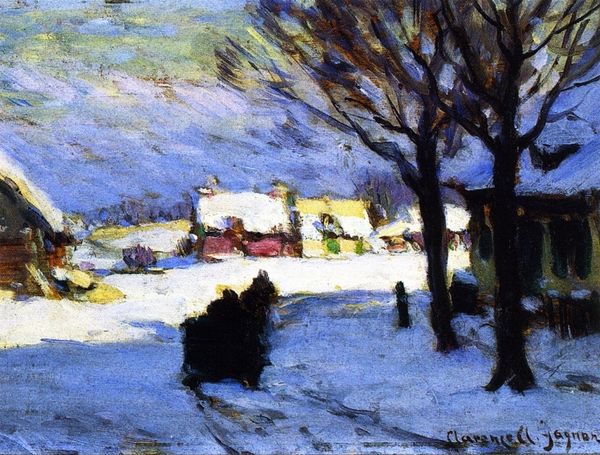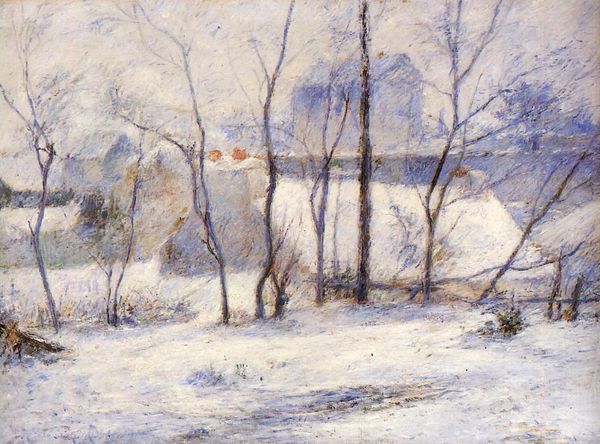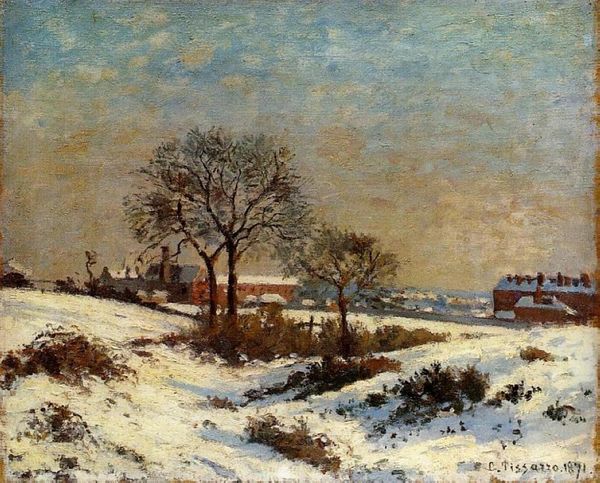
painting, plein-air, oil-paint
#
tree
#
snow
#
sky
#
painting
#
impressionism
#
plein-air
#
oil-paint
#
landscape
#
cityscape
#
mixed media
#
watercolor
#
realism
Copyright: Public domain
Curator: What strikes me immediately about Armand Guillaumin's "Hollow in the Snow," executed in 1869, is the rather melancholic air it exudes. The muted blues and whites…it’s a chilling vista. Editor: Yes, there's definitely a somber tone, but look at how Guillaumin handles the light. The way it reflects off the snow, the long shadows...notice also the textural quality created by his brushstrokes—it feels tactile, almost like you could reach out and feel the cold. Curator: The Impressionists were certainly preoccupied with capturing the fleeting effects of light and atmosphere. It is relevant to note, that this painting made at the cusp of impressionism captures the rise of cities expanding into once rural environs. The figure is small but central in the painting to illustrate a new kind of public sphere. Editor: Precisely. Consider the historical context—the rapid industrialization and urbanization of Paris during this period. Guillaumin, often associated with the avant-garde, presents a cityscape that speaks to those social shifts. Observe the lone figure walking down this snow-lined track and observe the newly fenced plots alongside the original track way. Curator: That’s interesting that you call out that "lone figure," dressed, it seems, in mourning colors...she offers, really, a counterpoint to the horizontality of the fence to the right side of the road. I find that detail structurally very engaging in terms of how the space functions. How can we understand these structures, fences, pathways in relation to the central character? Editor: Yes, those fences literally mark territory and evoke, possibly, property rights. What used to be public and communal becomes privatized. A powerful social commentary. Curator: I think the painting presents those tensions beautifully, both through formal construction as well as how those are framed within Impressionism more generally. Editor: Absolutely. This work exemplifies the kind of perceptive observations and commentary Guillaumin made concerning urban development during his time. The visual analysis reveals the politics, the quiet drama played out in subtle but incisive strokes. Curator: It’s a scene so deftly rendered—offering a poignant moment of quiet reflection on change. Editor: It's fascinating how looking closely at brushstroke and light brings such a historical and social narrative to life.
Comments
No comments
Be the first to comment and join the conversation on the ultimate creative platform.
